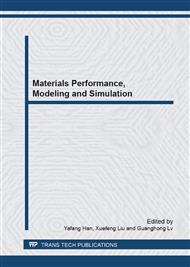p.205
p.211
p.217
p.223
p.229
p.237
p.243
p.250
p.255
The Surface Heat Transfer Coefficient Model of 7075 Al-Alloy Extrusion Product and its Temperature Prediction
Abstract:
Surface heat transfer coefficient is a key parameter for accurately predicting the extrusion product temperature near the die exit and then achieving isothermal extrusion by speed controlling. Based on the heat transfer characteristics of extrusion product during cooling process, a dynamic loading method of heat transfer boundary conditions was proposed. The surface heat transfer coefficient model of 7075 Al-alloy extrusion product was established using the dynamic loading method and inverse calculation comprehensively. The model indicated the relationship among surface heat transfer coefficient h, surface temperature T and initial temperature T0 as h=1.16T-0.97T0. Its accuracy is high enough for calculating the surface temperature of 7075 Al-alloy extrusion product. According to the model and the experimental data, the relationship between the product and the measured temperatures can be established. It provides an effective way to solve the problem that the extrusion product temperature near the die exit cannot be directly measured.
Info:
Periodical:
Pages:
229-236
Citation:
Online since:
March 2013
Authors:
Price:
Сopyright:
© 2013 Trans Tech Publications Ltd. All Rights Reserved
Share:
Citation:


